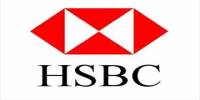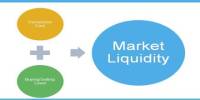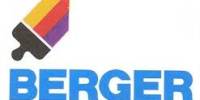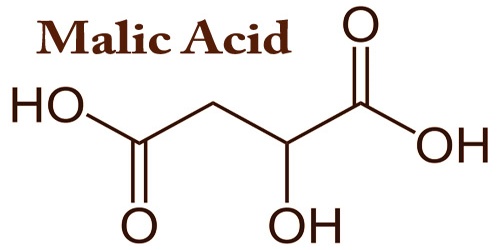The major objective of this term paper is to analysis Financial Statement Analysis. Here focus on Beximco Pharmaceuticals Limited and ONE bank’s financial statements analyzed here. Here find out over the year Beximco Pharmaceuticals performances were good. They gradually show better performance. They just have to maintain the improvement trend. ONE Bank Limited has a long way to go. Their performance was good in 2009 compared to previous year. But in 2010 their performance fall down like other peer bank, because of market condition.
Introduction
This is the term paper on FINANCIAL STATEMENT ANALYSIS. Beximco Pharmaceuticals Limited and ONE bank’s financial statements analyzed here.
BEXIMCO PHARMACEUTICALS LIMITED
Beximco Pharmaceuticals Ltd (BPL) is a leading manufacturer of pharmaceutical formulations and Active Pharmaceutical Ingredients (APIs) in Bangladesh. The company is the largest exporter of pharmaceuticals in the country and its state-of-the-art manufacturing facilities are certified by global regulatory bodies of Australia, Gulf nations, Brazil, among others. The company is consistently building upon its portfolio and currently producing more than 400 products in different dosage forms covering broader therapeutic categories which include antibiotics, antihypertensives, antidiabetics, antireretrovirals, anti asthma inhalers etc, among many others. With decades of contract manufacturing experience with global MNCs, skilled manpower and proven formulation capabilities, the company has been building a visible and growing presence across the continents offering high quality generics at the most affordable cost.
Ensuring access to quality medicines is the powerful aspiration that motivates more than 2,500 employees of the organization, and each of them is guided by the same moral and social responsibilities the company values most.
ONE BANK LIMITED
ONE Bank Limited was incorporated in May, 1999 With the Registrar of Joint Stock Companies under the Companies Act.1994 as a commercial bank in the private sector.
The Bank is pledge-bound to serve the customers and the community with utmost dedication. The prime focus is on efficiency, transparency, precision and motivation with the spirit and conviction to excel as ONE Bank in both value and image.
The name ‘ONE Bank’ is derived from the insight and long nourished feelings of the promoters to reach out to the people of all walks of life and progress together towards prosperity in a spirit of oneness. OBL is a private sector commercial bank dedicated in the business line of taking deposits from public through its various saving schemes and lending the fund in various sectors at a higher margin. However, due attention is given in respect of risk undertaking, risk hedging and if not appropriately hedged, reflection of the same in pricing. In the financing side, the bank’s major concentration is in trade finance covering about 20.88% of total financing as on YE2006 which is mainly a short-term investment. The banks financing concentrate in both, working capital finance and long-term finance. OBL has major concentration of financing in medium and large industries. Since the short-term finance carries low risk compared to long-term finance; the financing strategy of OBL will assist the bank to keep the risk at minimal.
While financing the industrial sector, the major concentration of the bank appeared to be in the textile and RMG sector; both the above sectors cover 30.89% of the total portfolio. OBL also involved in cement construction and transport sector financing. In the investment portfolio, OBL have substantial investment in quoted and non-quoted shares of different organization including some very prospective financial institutions. The bank has shown its acumen in reducing its exposure from ship scrapping sector, steel re-rolling where the bank had investment earlier. With the increase in exposure to RMG, the bank has increased its non-funded business income substantially. With an age of only 8 years, the OBL has taken initiative to launch IT based banking products like ATM facilities, E-banking etc that are praiseworthy.
SINGLE COMPANY MULTIPLE YEAR ANALYSIS
QUICK RATIO: Quick ratio measures the ability of a company to use its near cash or quick assets to extinguish or retire its current liabilities immediately. Quick assets include those current assets that presumably can be quickly converted to cash at close to their book values. A company with a Quick Ratio of less than 1 cannot currently pay back its current liabilities.
Quick ratio = (Cash+ Cash equivalent + Accounts receivables) / Current liabilities.
The firm’s quick ratio is improving day by day, which is a good sign. But the ratio was real bad in 2008. This company doesn’t have any marketable securities. So their quick assets are combination of cash, cash equivalents and accounts receivables. Their quick ratio gradually increases from 2006 to 2010, except in 2008. Because every year except 2008 they have FDR account. In 2008 they had no balance in FDR account. So their cash and cash equivalent amounts were less in 2008.
CURRENT RATIO: The current ratio is a financial ratio that measures whether or not a firm has enough resources to pay its debts over the next 12 months. It compares a firm’s current assets to its current liabilities. It is expressed as follows:
Current ratio = Current assets/ Current liabilities
Except 2008, every year’s ratio looks good. It increases gradually every year from 2006, except in 2008. Because every year except 2008 they have FDR account. In 2008 they had no balance in FDR account. So their cash and cash equivalent amounts were less in 2008. Also the ratio is quite high in 2009 and 2010. In 2009 and 2010 they have some short term investment, which was not previously acquired by them
TOTAL CURRENT LIABILITY TO NET WORTH: It indicates the reliance on the equity for payment of debt. It is one of the measures of the solvency of a firm and, as a rule of thumb, should not exceed 60 percent; higher percentages mean significant pressure on future cash flows.
Current liabilities to net worth = (current liabilities/ net worth) 100
It is a good sign that this ratio never goes more than 60%. It decreases gradually from 2006 to 2010 except in 2008.Net worth increases time to time, so there is no problem. But current liabilities were little high in 2008 compare to other year and net worth. In 2008 they took some new short term loans. They also had some tax payable of previous year.
CURRENT LIABILITY TO INVENTORY: It indicates the reliance on the available inventory for payment of debt. Expressed usually as a percentage, it is one of the measures of the solvency of a firm.
Current liabilities inventory = Current liabilities x 100 ÷ Available inventory.
The ratio gradually decreases every year except in 2008. The company maintains inventory based on their production necessity, so the amounts of inventory are inconsistent. But need of inventory increase every year, it means their production increase every year. But current liabilities were little high in 2008 compare to other year and net worth. In 2008 they took some new short term loans. They also had some tax payable of previous year.
TOTAL LIABILITY TO NET WORTH: Better than the ‘total debt to total assets’ ratio to measure a firm’s financial risk. The lower this ratio is, generally the better off the firm.
Total liabilities to net worth = Total liabilities ÷ net worth.
In 2009 this ratio is 82%, which is very alarming. In 2009 this company’s total liability was so high compare to others year. Current liability was quite ok, but their non-current liability was too high in 2009. In 2009 the company suddenly declare fully convertible, 5% dividend on preference share. Total amount was Taka 4100000000. The amount had been shown as non-current liability as per as IAS-32.
FIXED ASSET TO NET WORTH: Measure of the solvency of a firm, this ratio indicates the extent to which the owners’ cash is frozen in the form of brick and mortar and machinery, and the extent to which funds are available for the firm’s operations. A ratio value higher than 0.75 is indicates that the firm is vulnerable to unexpected events and changes in the business climate.
Fixed assets to net worth = Net fixed assets ÷ net worth.
This ratio gives a bad picture of the company. It should be less than 75%. But for this company it is more than 75%. It decreases a little in 2010, but still more than 75%. In 2009 it was very high. It means firms most of the money are involves in lands, buildings, equipment etc. it has less money for operations.
They had some intangible assets in 2009 and 2010, which is actually good. Every year they purchased new land, building, plant, machinery, transport, equipment etc. in 2010 they sell a large amount of fixed assets, that why this ratio decreased a little.
INVENTORY TURNOVER: In accounting, the Inventory turnover is a measure of the number of times inventory is sold or used in a time period such as a year. The equation for inventory turnover equals the cost of goods sold divided by the average inventory. Inventory turnover is also known as inventory turns, stock turn, stock turns, turns, and stock turnover.
Inventory turnover = Sales / Total inventory
The ratio is quite same over the year. The company purchased inventory 2 to 3 times in a year from 2006 to 2009. In 2010 they purchased 3 to 4 times. In 2009 their sales represent new products called liquid nitrogen and active pharmaceuticals ingredients. So they had to purchase new raw materials. Their production amount also increased gradually over the year, so they need more inventory.
ASSET TO SALES: A measure of a company’s efficiency in managing its assets in relation to the revenue generated. The higher this ratio, the smaller the investment required to generate sales revenue and, therefore, the higher the profitability of the company. Also called total assets turnover.
Assets to sales = Total assets / Sales
The ratio is quite same throughout the years. In 2009 it was highest. In 2010 assets to sales decreased, because in 2010 they sales was really high compare to previous year. They sold active pharmaceuticals quite a double than previous year.
SALES TO NET WORKING CAPITAL: The ratio between sales and net working capital is also called velocity as this indicates how a company is able to turn its cash many times over to create more sales and in earn more profits. The higher the ratio is, better for the company.
Sales to net working capital = Sales / Net working capital
This ratio is giving a bad picture of the company. It is totally inconsistent. The ratio was very bad in 2009, 2010.
But in 2008 the ratio was really good. In 2008 net working capital was lowest, so the ratio increases. But decreasing of net working capital is not a good sign. The company is not very efficient for utilizing their net working capital. The increase or decrease in net working capital doesn’t influence the sales very much.
ACCOUNT PAYABLE TO SALES: This ratio measures relationship between unpaid suppliers’ bills and the sales revenue in an accounting period. It is considered high if it approaches 1.0 and, in some industries, may be a sign that the firm is having liquidity problems.
Accounts payable to sales = Total accounts payable ÷ Sales revenue.
This ratio is showing a quite good picture of the company. It decreases gradually over the years, except in 2009.
In 2009 accounts payable was quite high compare to previous year. They had a high income tax payable for previous year. In 2010 their accounts payable also high, but their sales also increase in a big amount.
RETURN ON SALES: A ratio widely used to evaluate a company’s operational efficiency. ROS is also known as a firm’s “operating profit margin”
Return on sales = Net profit after tax / Sales
The ratio is quite the same over the years. But in 2007 it was little less. In 2007 their sales was lowest. Their local sales was lower than 2006, but export sales was higher than 2006. They sold less Basic chemicals and IV Fluids than 2006. In 2010 their sales was highest than ever, as they introduced new items.
RETURN ON ASSETS: An indicator of how profitable a company is relative to its total assets. ROA gives an idea as to how efficient management is at using its assets to generate earnings. Calculated by dividing a company’s annual earnings by its total assets, ROA is displayed as a percentage. Sometimes this is referred to as “return on investment”.
Return on assets = Net profit after tax / Total assets
This ratio is almost same over the year. Assets and PAT changes in quite a same rate. Assets increased over the year as well as PAT.
To see the graph says that the growth rate of the ROA was just like return on sales. Over the period of Time Company generating more profit and it’s was continue up to 2010.
RETURN ON NET WORTH: The amount of net income returned as a percentage of shareholders equity. Return on equity measures a corporation’s profitability by revealing how much profit a company generates with the money shareholders have invested.
Return on equity = Net profit after tax / Total equity
Shareholders are quite happy with this company. Their growth is quite good. Return on equity increased over the year except in 2007. In 2007 sales was little less. So profit after tax decrease a little.
COLLECTION PERIOD: The amount of net income returned as a percentage of shareholders equity. Return on equity measures a corporation’s profitability by revealing how much profit a company generates with the money shareholders have invested.
DSO = (Account receivables / Sales) 365
Their collection period is quite good. They get their money within 50 days of their sales. They usually don’t have any due to their directors, managing agents, managers or other official members. They credit sales mainly for export.
MULTIPLE COMPANY MULTIPLE YEAR ANALYSIS
RETURN ON ASSETS: An indicator of how profitable a company is relative to its total assets. ROA gives an idea as to how efficient management is at using its assets to generate earnings. Calculated by dividing a company’s annual earnings by its total assets, ROA is displayed as a percentage. Sometimes this is referred to as “return on investment”.
It is a good sign that, the ROA increased gradually over the year. It increased more than 2 times in 2010, than previous year. In 2009 company didn’t had any money at call and short notice. But in 2010 they had taka 300000000 in money at call and short notice. All other assets also increased in 2010. So their ROA should decrease for reason. But it didn’t. Their net income also increased over the year. There net income increased more than 2times in 2010 than previous year.
Increasing rate of net income was higher than increasing rate of total assets in 2010. One banks interest expense was lower in 2010 than previous year. Their provision also lowers in 2010 than previous year.
In 2008 and 2009 banks ROA was lower than industry average. In 2009 banks performance was quite same as industry average. But in 2010 banks performance was real good, even it was better than industry average performance.
RETURN ON EQUITY: The amount of net income returned as a percentage of shareholders equity. Return on equity measures a Corporation’s profitability by revealing how much profit a company generates with the money shareholders have invested.
One bank’s ROE increased gradually over the year, which is a good sign. Their ROE increased quite 2 times in 2010 than previous year. Their equity increased in 2010 than 2009, but not in same rate as net income increased in 2010. Net income increased more than 2 times in 2010 than 2009, as their interest expense and provisions were less in 2010 than 2009. And interest income increased in 2010 than 2009.
One bank’s ROE was lower than industry average ROE in 2008, and quite same as industry average ROE in 2009. In 2010 one bank’s ROE is higher than industry average, which is really a good thing. Even in 2010 their performance is best in the peer group.
EXPENSE RATIO: this ratio measures that what it costs an investment company to operate a mutual fund. An expense ratio is determined through an annual calculation, where a fund’s operating expenses are divided by the average dollar value of its assets under management. Operating expenses are taken out of a fund’s assets and lower the return to a fund’s investors.
It is really a good sign that ONE bank’s expense ratio decreased over the year. It was less than 0.1 in 2010, as their some of expenses were less in 2010 compared to previous years. All of their assets increased in 2010 compared to previous years. They invested in assets in 2010. They also had a large amount of commission receivables in 2010.
Their expense ratios were always higher than industry average, which is really a bad sign. But the difference decreased over the year, which is a positive sign. The ratio was also the highest in peer group, which is not good. It indicates the bad performance of One bank in peer group.
ASSET UTILIZATION: The highest the ratio is good for any company. The graph is not giving any good picture. One bank’s asset utilization ratio is not good over the year. In 2009 it fall so down compared to previous year. In 2010 their total assets increased in a huge amount compared to previous year. But their net income didn’t increase in the same rate. They failed to utilize the assets. They made a provision account for the diminution value of share in 2009.
In 2010 the ratio increase than 2009, but it was not more than 2008. In 2010 the bank was more efficient in utilization of asset than 2009.
It is a good thing that all banks in peer group were quite same in this ratio over the time. One bank’s performance was always better then industry average, which is a good sign.
DEGREE OF LEVERAGE: The ratio is calculated through total equity divided by total assets. The ratio decreased in 2009 compared to 2008. Both assets and equity increased in 2009 compared to 2008. But the increasing rate of assets (42.27%) was more than increasing rate of equity (32.56%). The Bank’s balance with other banks was 2 times more in 2009 compared to 2008. Investment also increased quite a double in 2009 compared to 2008.
In 2010 the ratio was than increased. In 2010 equity and assets both increased. But the increasing rate of equity (58.52%) was more than increasing rate of assets (29.98%). In 2009 there was no balance in money at short call and notice; bit in 2010 the balance was taka 30000000. In 2010 proposed bonus share was 2 .4 times more than previous year. In 2010 surplus in profit and loss account was 2.6 times more than previous year. One bank’s degree of leverage was always lower than the industry average. But its performance was quite same as peer groups.
NET INTEREST MARGIN: One type of performance measures that examines how successful a firm’s investment decisions are compared to its debt situations. A negative value denotes that the firm did not make an optimal decision, because interest expenses were greater than the amount of returns generated by investments.
It calculated through dividing net interest income by earning assets.
One banks net interest margin increased over the year, which is really a good sign. Both net interest income and earning assets increased over the year. But the increasing rate of net interest income was more than earning assets.
In 2010 their interest income was more than previous year, but their interest expense was less than 2009 and 2008. As a result in 2010 their net interest income increased a huge. In 2010 they paid less interest on term deposit.
In 2008 one banks net interest margin was little less than industry, but in 2009 and 2010 the ratio is quite same or more than industry. But in compared of some peer bank, their performance was little worse in the considering years.
SPREAD: It measures that how more or less the firm earns interest, than they pay.
One banks spread increased over the year. It increased a little more in 2010 compared to 2009 and 2008. Their interest income increase in 2010, but interest expense decreased compared to previous year.
The spread of ONE bank was always higher than industry. Only one peer bank was always showing better performance than one bank.
EARNING BASE: It measure that how much assets in total assets are earns interest.
The ratio was quite same for ONE bank over the years. But it decreased a little in 2010 compared to previous years. In 2010 increasing rate of earning assets (24.54%) was little lower than increasing rate of total assets (26.86%). In 2010 there was taka 300000000 in money at call and short notice account, which was not available in 2009.
One bank’s earnings base was always lower than the industry, which is not good. City bank and DBBLs performance was quite same as ONE bank, but AB banks performance was really good among peer banks.
BURDEN TO ASSET: It measures the performance of total assets, in the sense how total assets bearing the burden of bank’s expenses.
The ratio decreased over the year, which is not good. The ratio was quite same in 2008 and 2009, but it decreased a huge in 2010. Non-interest expense increased more than 1.5 times in 2010 compared to previous year. One bank’s non-interest expense was always higher than non-interest income. Non-interest expense increased over in a higher rate than the increasing rate of non-interest income.
The ratio was quite same as industry in 2008 and 2009. But in 2010 it was quite a double than industry.
EFFICIENCY RATIO: It measures the relationship between expense and income.
The ratio decreased over the year, which is a good sign. It decreased in quite a same rate in 2009 and 2010. Non-interest expenses increaed over the year, but the income increasing rate was more. Net interest income increased every year.
One bank’s ratio was always lower than industry, which is really good.
CURRENT LIABILITY COVERAGE: A cash-basis ratio that measures the relationship between changing liabilities and cash flows of a company experiences during the course of a time period. Current liability coverage ratio is a measure of liquidity. Unlike the acid-test ratio or current ratio, the current liability coverage ratio does not look at year-end balances. Instead, the ratio is calculated by taking the net cash provided by operating activities and dividing it by the current liabilities.
One bank’s current liability coverage was highest in 2009, as it increased from 2008. But it decreased in 2010. Their CFO increased over the year as well as current liabilities. In 2009 CFO increased 4.72 times than 2008, but current liability increased 1.57 times inly than 2009. In 2009 ONE bank gave fewer loans to customer than previous year. May be they taken conservative credit policy in 2009. In 2009 they took taka 470,000,000 loan, which was payable on demand. But in 2008 they didn’t have any payable on demand borrowing. These loan increased current liability and CFO both in 2009. In 2009 ONE bank’s deposit increased quite as 3times than previous year.
In 2010 CFO increased .56 times than 2009, but current liability increased 1.16 times than previous year. As a result in 2010 ONE bank’s current liability coverage ratio decreased than 2009. All three years ONE bank’s current liability coverage ratio was higher than industry, which is really a good sign. In 2010 all peer banks except AB bank’s ratio decreased. So we can say that in 2010 market was not good for the banks. They got less deposit from customer. People withdraw much money, take more loans. Even many people close FDR accounts. In 2010 people was less interested to bank interest, they invested more in stock market. Even they took loans from bank to invest in stock market. As a results bank’s cash inflow was less.
LONG TERM DEBT COVERAGE: This ratio is used to get a “cleaner” understanding of long-term debt. By taking out short-term liabilities, the ratio compares long-term debt against long-term liabilities.
The graph is showing quite same picture as previous graph. ONE bank’s condition was improved in 2009 compared to 2008, but it decreased in 2010. Except AB bank, all other peer bank and industry is also showing the same condition.
ONE bank’s condition was always better than industry, which is good. In 2009 people was more interested to deposit in bank compare to 2008, as it is a secured investment. But in 2010 most of the people was interested in stock market, as market condition was good. Every participant was earning capital gain. So most of the people withdraw money from account, closed FDR account, even take loan from bank. So cash inflow was less in 2010.
INTEREST COVERAGE: A company that is not making enough money to pay its interest expense will not survive. Therefore, it is common for creditors and investors to monitor the number of times earnings cover interest payments.
ONE bank’s interest coverage ratio was not bad in 2008. It was quite same as industry. But in 2009 it decreased so low, but better than industry. In 2009 they paid i.24 time more for interest than 2008. As in 2009 they got more deposits than 2008. In 2009 they also borrowed more than 2008. So they had to pay more interest.
In 2010 ONE bank’s performance improved compared to 2009, but it was far away from industry, which indicate real bad condition of ONE bank. As in 2010 deposit, FDR decreased. So they didn’t pay much for interest. Even their interest expense was less than 2009.
EARNING QUALITY: This ratio describes the condition of earnings are recognized. Earnings of high quality are attributable to conservative accounting standards and/or strong cash flows. Low quality earnings come from artificial sources, such as inflation or aggressive accounting. For example, a publicly-traded company may claim strong earnings and consequently have a high stock price. However, the company may have low cash flow from operations and the strong earnings may come mainly from the accounting structures it uses. Therefore, its stock is overvalued. Quality of earnings ratings is subjective, but it does take into account matters such as corporate governance, inventory to sales ratios, and other factors.
In 2008 ONE bank’s earning quality was quite better than industry, which indicates their good performance. In 2009 the performance was better than 2008. As in 2009 they got more deposits from customer. So they able to give more loans in 2009, and earned more interest than 2008.
In 2010 their performance decreased. As the market condition was not good in 2010. But ONE bank’s performance was better than industry. In 2010 their EBIT increased. But cash inflow was not good. They received fewer deposits from customer. People was not interested in bank deposit, they wanted to invest in stock market.
ASSET EFFICIENCY RATIO: It measures the cash generating power of assets. It also indicates how efficiently a firm is utilizing their assets.
One bank’s asset efficiency ratio was not bad in 2008, even it was better than industry. It increased more than 3 times in 2009 compared to 2008. As the CFO were more than 4 times than 2008. They got more deposits from customer in 2009.
But in 2010 asset efficiency ratio decreased than 2009. It decreased more than 2 times than previous year. In 2010 the CFO decreased quite 2 times than 2009. ONE bank’s received less amount of deposit in 2010 than 2009. People were not interested to deposit money in bank in 2009. But the bank performance was always better than industry, which is really good.
CAPITAL ASSET RATIO: All three years company spent more in asset acquisition, and received less from assets sell. ONE bank always had negative capital assets ratio. For this ratio their performance was quite same over these three years.
One bank’s normally invested in T-bill and T-bond, and sometimes also in other company’s share. They purchased more T-bill in 2009 than 2008, but less in 2010 than 2009. They purchase no T-bond in 2008. But they purchase more T-bond in 2010 than 2009. They purchase more share of other companies in 2009 than compared to 2008, but less in 2010 compared to 2009.
They sold more T-bill in 2009 compared to 2009, but more in 2010 compared to 2009. Company invested more in 2009 compared t0 2008, as they had more money in hand. Customers deposited more in account compared to 2008.
But in 2010 ONE bank invested less in T-bill, T-bond and other share as they had fewer deposits. They sell more T-bill, T-bond and other share as they need money for giving loans.
CASH GENERATING POWER: It indicates how efficiently a firm generates cash.
ONE bank’s cash generating power is not good. It was very lower than industry and other peer banks over the years. In 2009 their cash generating power increased more than 3 times than 2008. In 2009 CFO and cash inflow from investing activities were higher than 2008.
But in 2010 CFO and as well as cash inflow from operating activities decreased a lot from previous year. So in 2010 ONE bank’s cash generating power decreased. In 2010 they invest less in T-bill, T-bond and other share as they had less money in hand. They earn less from investment activity as they invest less.
OPERATING CASH MARGIN: A measure of the money a company generates from its core operations per dollar of sales. The operating cash flow can be found on the company’s cash flow statement, and the revenue can be found on the income statement. A high operating cash flow margin can indicate that a company is efficient at converting sales to cash, and may also be an indication of high earnings quality.
ONE bank operating cash margin was quite good in 2008, better than industry and most of the peer banks. In 2009 the operating cash margin increased more than 3.5 times than 2008. The CFO increased quite a 5 times than 2008. Sales also increased in 2009, but only 1.2 times than 2008.
In 2010 their operating cash margin decreased a lot, as their CFO decreased more than 2 times than 2009. Sales also increased in 2010. It means increasing sales didn’t increase their cash inflow. The reason behind this, maybe they couldn’t able to collect their accounts receivables in time
CASH FLOW PER SHARE: It measures a firm’s financial strength.
In 2009 ONE bank’s CFO increased quite a 5 times than 2008, as a result their cash flow per share increased in 2009. But in 2009 ONE bank’s performance was below the industry performance.
VALUATION
For valuation, I take past 5 years data from 2006 to and 2010, and forecast future 5 years data from 2100 to 2015. Then I calculate terminal value of each data. At first I forecast Balance sheet, Income statement and cash flow statement for net 5 years.
For forecasting I calculate the growth rate of total assets. Then identify other assets, liability and equity as a % of total assets.
For income statement I calculate the growth rate of sales, and identify the expenses as a % of sales. For income tax expense I consider different value for each year.
For cash flow statement I calculate growth rate for each data, and forecast them.
To calculate the terminal growth I needed discount rate and terminal growth rate. I calculate the terminal growth rate for last 5 years, and average them.
For discount rate I calculate WACC. At first I calculate cost of debt and then cost of equity. I use 2010’s stock price and market index for calculating beta.
I take EBIT as net profit to calculate future cash flow. Then I add depreciation expense with EBIT and get EBITDA. Then I deduct income tax expense from EBITDA and get unlevered net income.
I add depreciation expense, less net changes in net working capital and capital expenditure from EBIT, and get future cash flow. I also calculate the terminal value of future cash flow. Then I discounted the future cash flow, and get the present value of future cash flow.
By adding all present value of future cash flow I get enterprise value of BEXIMCO. Then I calculate the equity value and value per share.
Their intrinsic value per share is greater than market value of the share. So people should buy this share. In future they will be benefitted through both capital gain and dividend.
CRG MODEL
I demonstrated a CRG model for Beximco. It calculated that they are fully cash secured. And Beximco is taking full advantage of it. They are taking more long term loan than short term loan compare to previous years.
RECOMANDATIONS
For Beximco Pharmaceuticals Limited
- They should invest more in current assets; it will improve their liquidity condition.
- They should utilize their assets efficiently, specially fixed assets.
- They should utilize all of their strength to increase their sales.
- They should try to lower the cost so their return can increase.
- They should follow strict policy for collecting accounts receivables
For ONE Bank Limited
- They must reduce their operating expense.
- They should do some more marketing activities to attract customer.
- They should contact valuable ex customer personally.
- They can increase the interest on deposits and FDR to attract customer.
- They should utilize their assets more efficiently, specially fixed assets.
- They should increase short term investment to improve liquidity.
- They should apply restricted credit policy to reduce bad debt expense.
- They should increase the earning assets among total assets.
- They should try to reduce the non-interest expense.
- They should try to increase the non-interest income.
- They should pay back their debt with in time, so that their credit worthiness increases.
- They should pay tax properly to meet the legal obligations.
CONCLUSION
Beimco Pharmaceuticals Limited is one of the leading pharmaceuticals firm in the industry. Over the year their performances were good. They gradually show better performance. They just have to maintain the improvement trend.
ONE Bank Limited has a long way to go. Their performance was good in 2009 compared to previous year. But in 2010 their performance fall down like other peer bank, because of market condition. In 2010 people were not interested to invest in bank. They were interested to stock market. But the market condition is changed now. The falling performance of stock market is proved that bank is more reliable than stock market for investment. So this is the high time from ONE bank. They should utilize the opportunities. They should offer something beeter and uniqe for the customers. If they can do better in 2011 and forwarding year people will forget their previous bad performance.
















